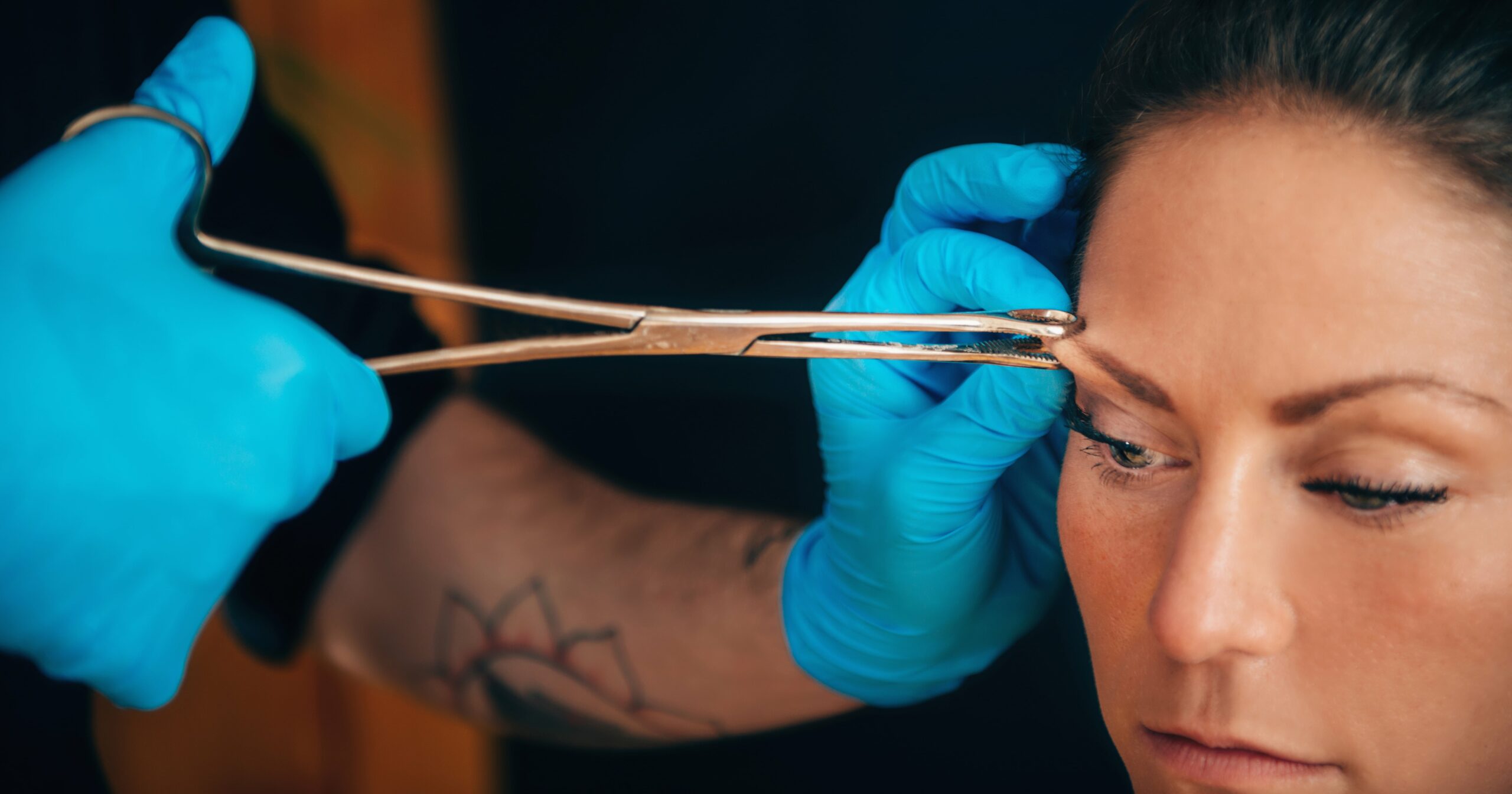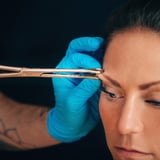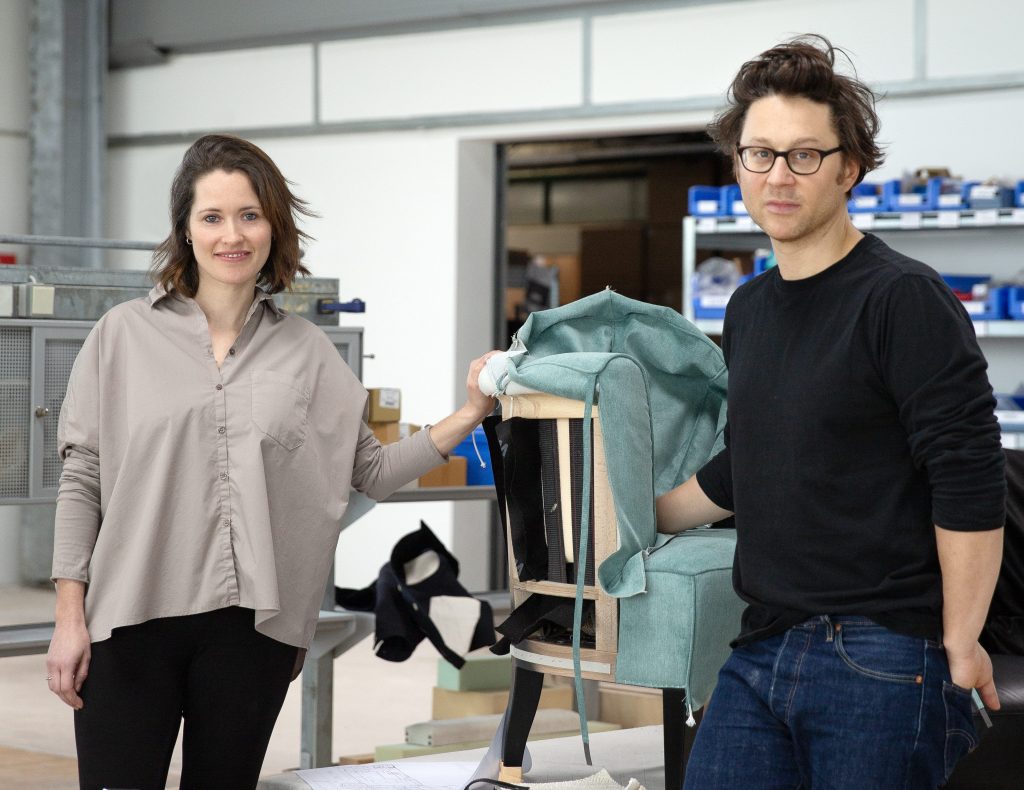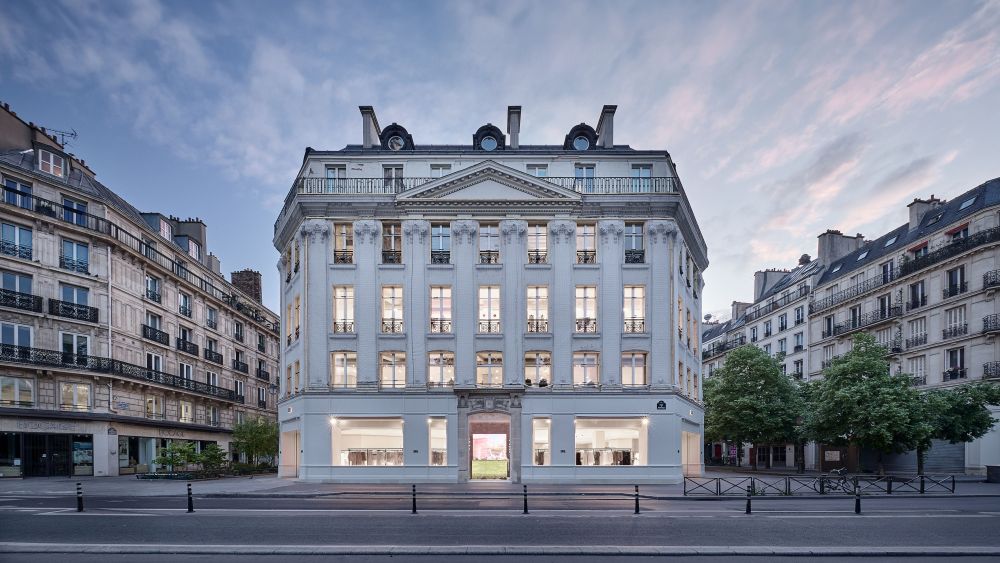Image Source: Getty/microgen
People have adorned body jewelry for centuries, and over time, the piercing trends have veered from your traditional earlobe piercing to anywhere else on the body that you could imagine. Non-tradition piercing placements can help you to express your style and individuality and your piercing location can almost act as a form of introduction without you ever having to say a word. You can choose from dermals and belly-button piercings or stay above the shoulders and opt for a lip or nose piercing. The creativity that you can exercise feels nothing short of freeing.
If you’re an avid piercing enthusiast, you may have noticed that though the pandemic has ended, wearing face masks during that period caused a shift in preferred placements. As a result, nontraditional positions like horizontal eyebrow piercings and auricle placements have gotten much more popular and they don’t seem to be slowing down any time soon.
The popularity of eyebrow piercings, in particular, has persisted post-pandemic, so if you’ve been wanting to try your hand at the trend for yourself, we spoke to a piercing expert about everything you need to know about them – from the different placements you can choose, the pain levels, and even how to best care for them, ahead.
What Are Eyebrow Piercings?
An eyebrow piercing is described as “a piercing resting against or across the rim of the brow of your eye,” says Jim Kelly, piercing training program manager at Banter by Piercing Pagoda. Eyebrow piercings differ from other facial piercings because they are surface piercings. Meaning? “The entry and exit points of eyebrow piercings sit on the same plane of skin, unlike a lip piercing, which goes from inside of the mouth to outside, or a nostril, which goes from outside of the nostril to the inside,” Kelly says.
Different Types of Eyebrow Piercings
There are five different types of eyebrow piercings:
- Vertical eyebrow piercing: this is the standard. One end is located on the upper side of the eyebrow ridge and the other below the outside curve of the brow.
- Horizontal eyebrow piercing: generally, this piercing is on the top of the eyebrow ridge, running from left to right instead of top to down.
- Nonstandard positions: this piercing is still vertical, but instead of the outside edge of the eyebrow, the piercing is more in the center or sometimes inner eyebrow ridge.
- Multiples: these are the addition of more than one eyebrow piercing close to each other or one on the inner edge of the brow and one on the outer. This is really any combination of eyebrow piercings.
- Anti-eyebrow piercing: this piercing is technically not on the eyebrow but the opposite outside edge of the eye on the cheek side, covering an inner brow that doesn’t exist.
The Process of Getting an Eyebrow Piercing
Every piercer has their own individual style (and price range) when it comes to doing an eyebrow piercing, but Kelly says you can expect the process to be fairly similar across the board. To start, all piercers use hollow-point, single-use piercing needles, and the skin should always be prepped with an antiseptic skin cleanser. Some piercers use forceps and others a freehand technique, but regardless, the jewelry should be followed through after the needle in one smooth transition. After the skin is pierced, it’s set in place by screwing on the top piece of the jewelry.
Best Jewelry For an Eyebrow Piercing
Though there are a range of jewelry options that can be used for this piercing, Kelly particularly recommends using gold or platinum. “A curved barbell is best for a vertical eyebrow piercing. Horizontal eyebrow piercings and anti-eyebrow piercings should be done with surface bars to minimize chances of rejection, but a hoop is not recommended in an eyebrow piercing at all.”
Kelly especially likes the Banter by Piercing Pagoda 016 Gauge Curved Barbell in 10K Gold ($70) and the Banter by Piercing Pagoda 016 Gauge Crystal Curved Barbell in 10K Gold ($70).
Do Eyebrow Piercings Hurt?
While everyone tolerates pain differently, Kelly says the pain of getting an eyebrow piercing is generally on the low end of the scale. Compared to other facial piercings, like the lip, which tends to have more nerve endings, “it’s something like a two out of 10,” Kelly says.
Eyebrow Piercings Risks
Eyebrow piercings have a higher chance of being rejected, and proper aftercare is key to successfully healing the piercing. “Pulling on them or sleeping on them consistently leads to a higher chance of rejection, along with improper care and improper initial placement,” Kelly says. “Horizontal eyebrow piercings and anti-eyebrow piercings have a higher chance of rejection than others, but the [chance of rejection for] an anti-eyebrow is much higher.”
To verify if an eyebrow piercing is being rejected, Kelly recommends checking with your local piercer or taking note of how much skin is showing once the initial swelling goes down. If after a few weeks, you notice more skin is showing than before, then the piercing is probably rejecting. If you do notice this, Kelly says removing the piercing to eliminate the chance of your skin developing heavier scarring is the best course of action.
Eyebrow Piercing Aftercare
Kelly recommends cleaning the piercing twice a day, using a clean cotton Q-tip or gauze, with Studex Advanced Piercing Aftercare & Cleanser ($15) or H2Ocean Piercing Aftercare Spray ($16). He also recommends “letting crust build up and fall off naturally in the shower” and making sure to get the piercing on the side of your face that you don’t sleep on. “Although it is more forward on your face than ear piercings, the pillow may still come in contact with the area of the piercing, causing a higher chance of rejection,” Kelly says.




